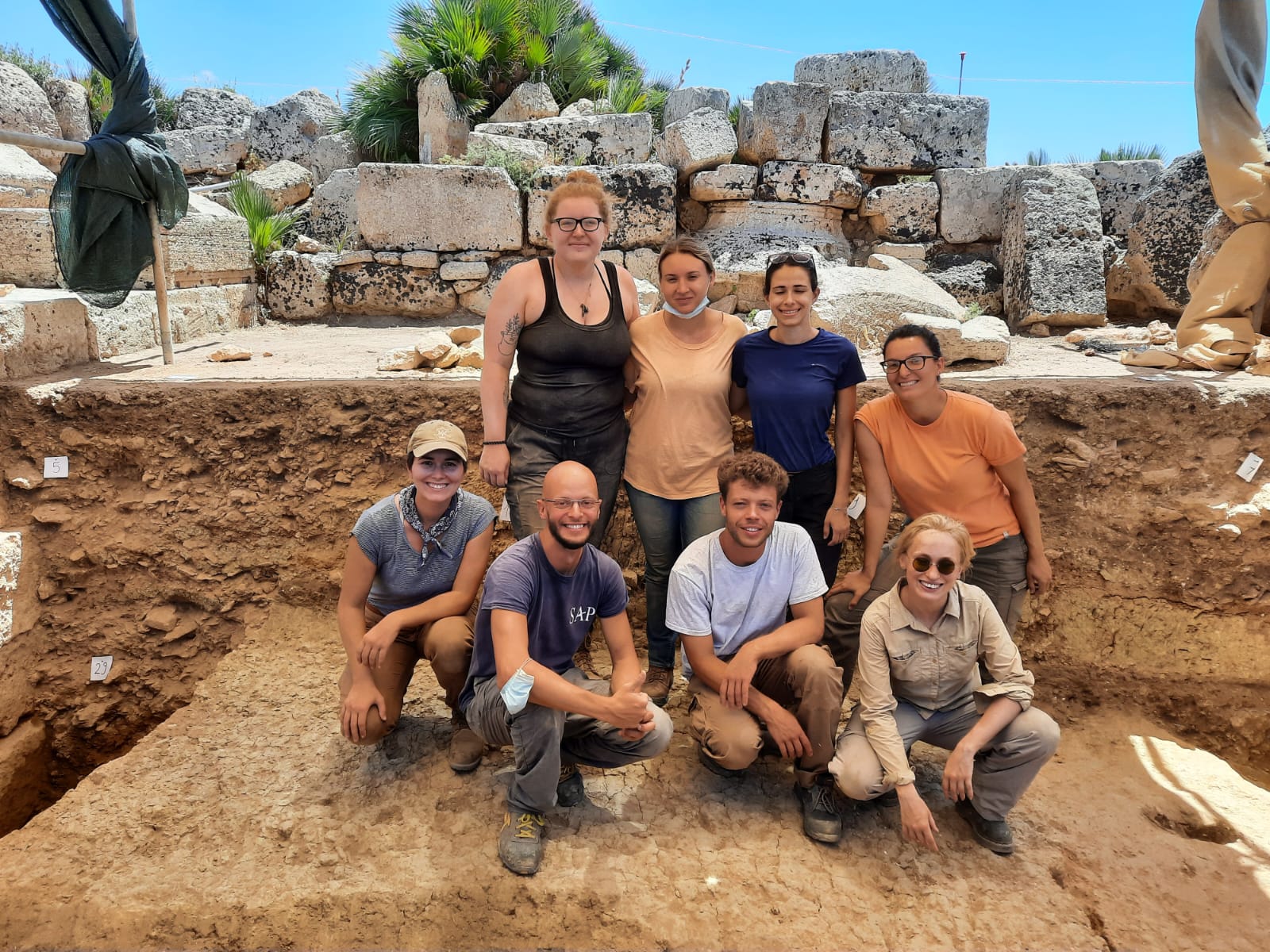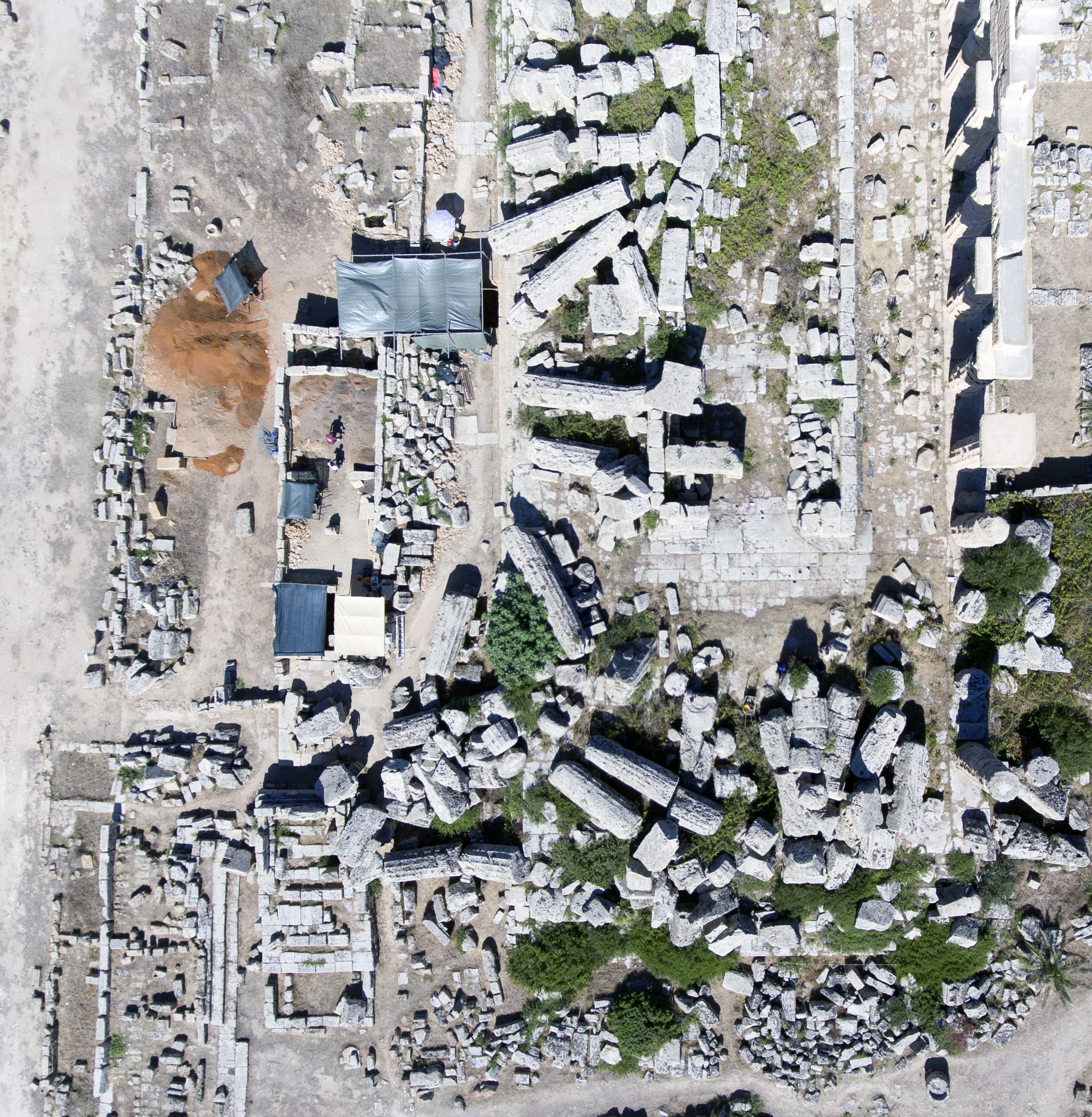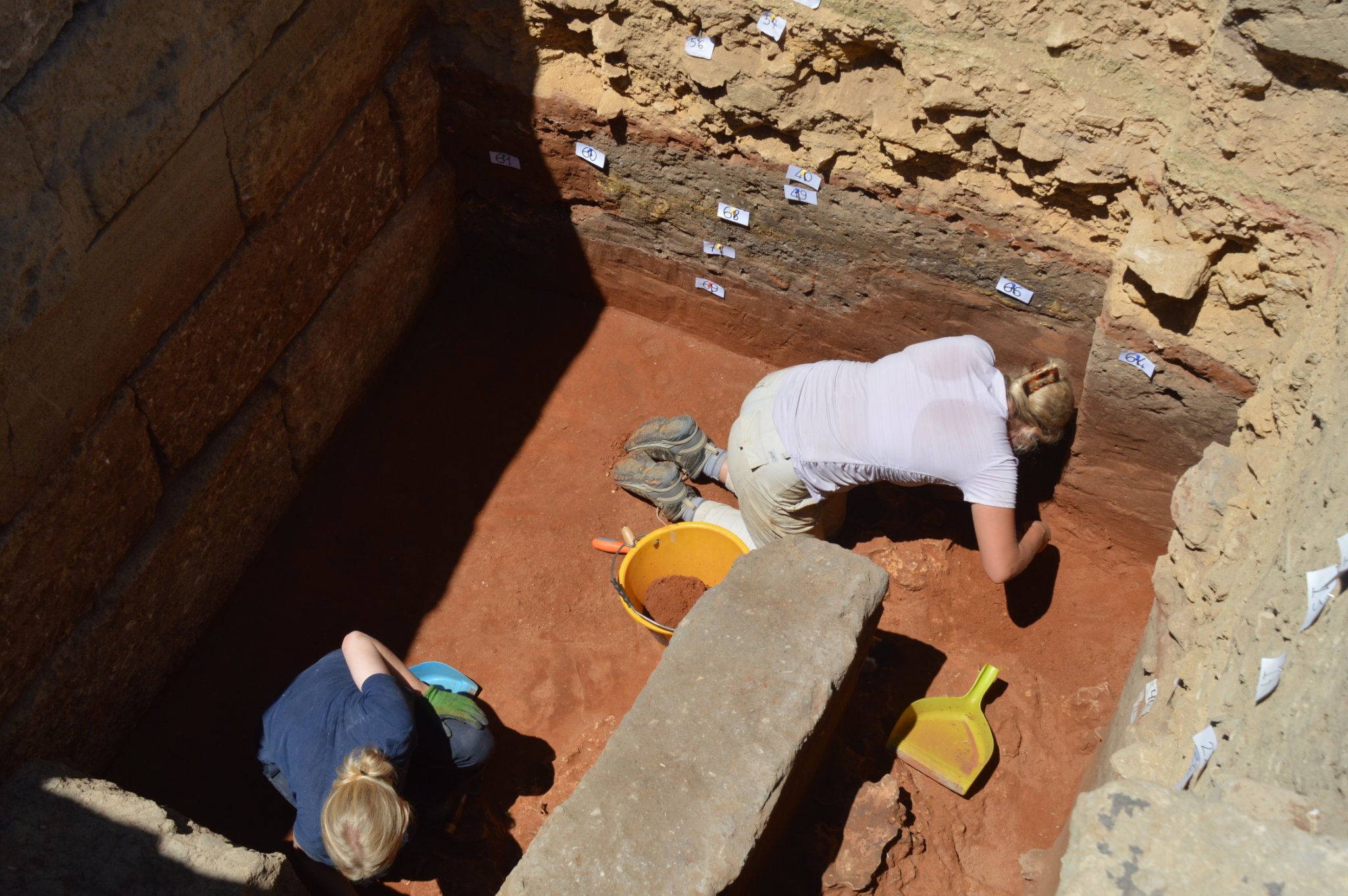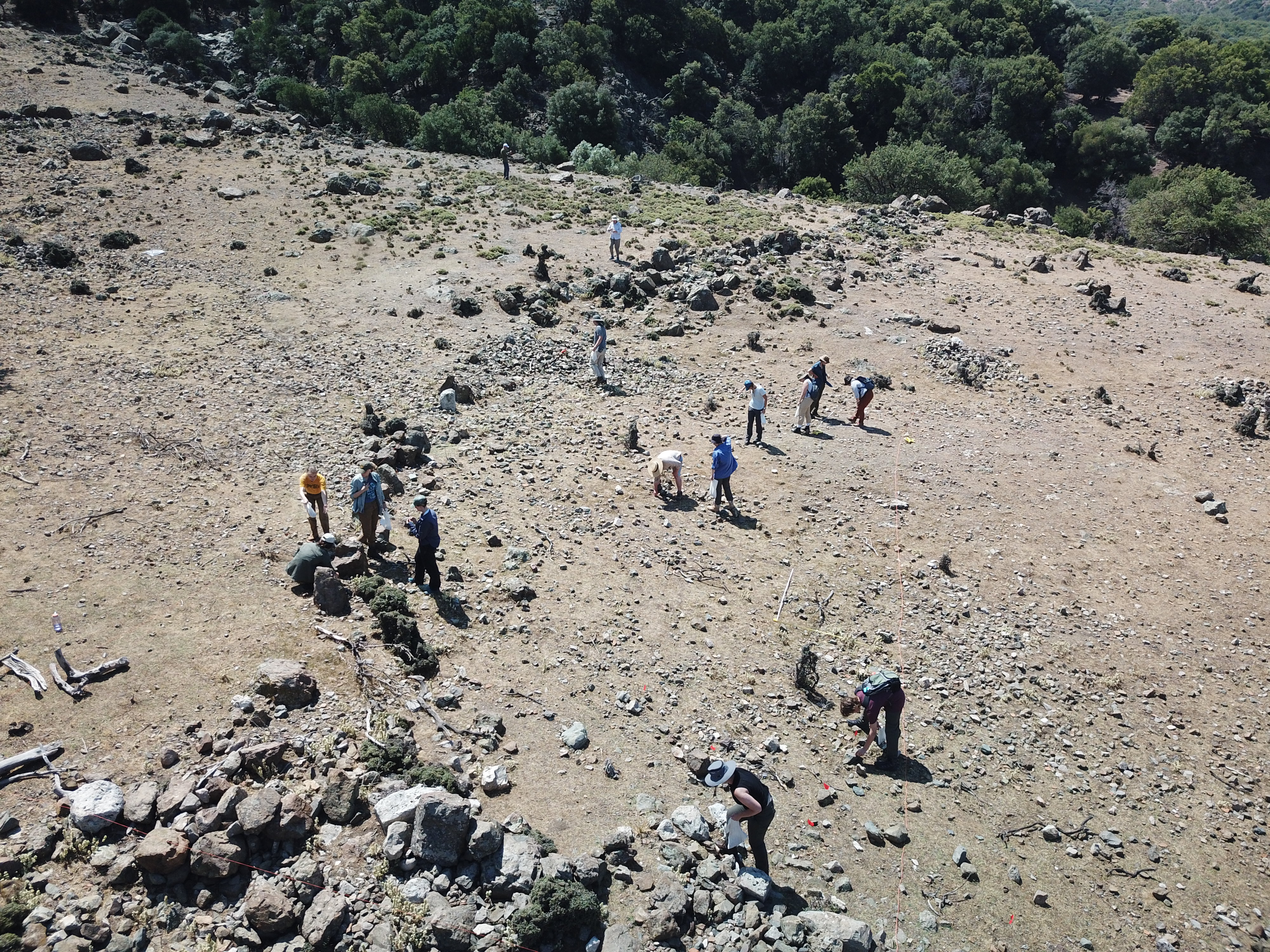Excavations at Selinunte
At Selinunte, the site of an ancient Greek colony founded in southwestern Sicily in the seventh century BCE, Classical Studies students participated in the ongoing American-Italian excavations of the ancient colony’s acropolis (learn more here). The 2022 season saw excavation in two areas: a joint mission with the German Archaeological Institute of Rome to study the foundations of the twin fifth century Temples A and O, and ongoing study in and around Temple R, the oldest temple in the colony’s main urban sanctuary. Zoey, Lillian, and Morgan were members of the team excavating the foundations of Temples A and O, and helped to uncover signs of seismic activity that explains why construction of Temple O was abandoned part way through. Caroline, meanwhile, was part of the team excavating within Temple R, discovering the clay foundations of a structure predating the temple, and in fact the best evidence for the birth of the colony in the seventh century.
Excavations at Samothrace
At Samothrace, home to the sanctuary of the nameless Great Gods and the site of one of the most important mystery cults of the Mediterranean world, the American Excavations Samothrace have turned in recent years to studying how ancient initiates traveled from the island’s ancient city to the sanctuary, and how they then navigated the space (learn more here). This summer, recent IU graduate Renae Dishman participated in a surface survey that studied for the first time the hillside and ravine between city and sanctuary. As well, Renae was part of the team investigating the ancient Hellenistic theater inside the sanctuary, discovering an intact drainage pipe and foundations several rows of seating – allowing project architects to finalize the reconstruction of what this ancient structure looked like.
By Andrew Farinholt Ward (2021-2022 Schrader Visiting Assistant Professor)





 The College of Arts
The College of Arts